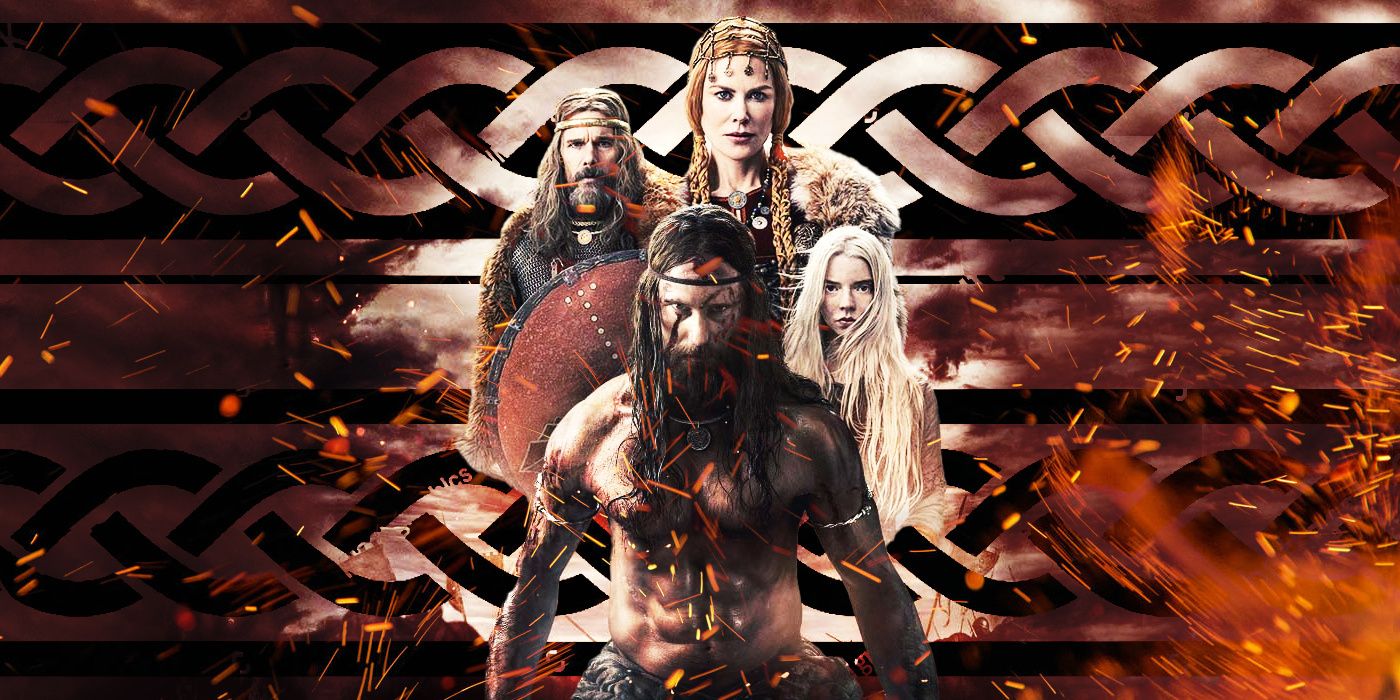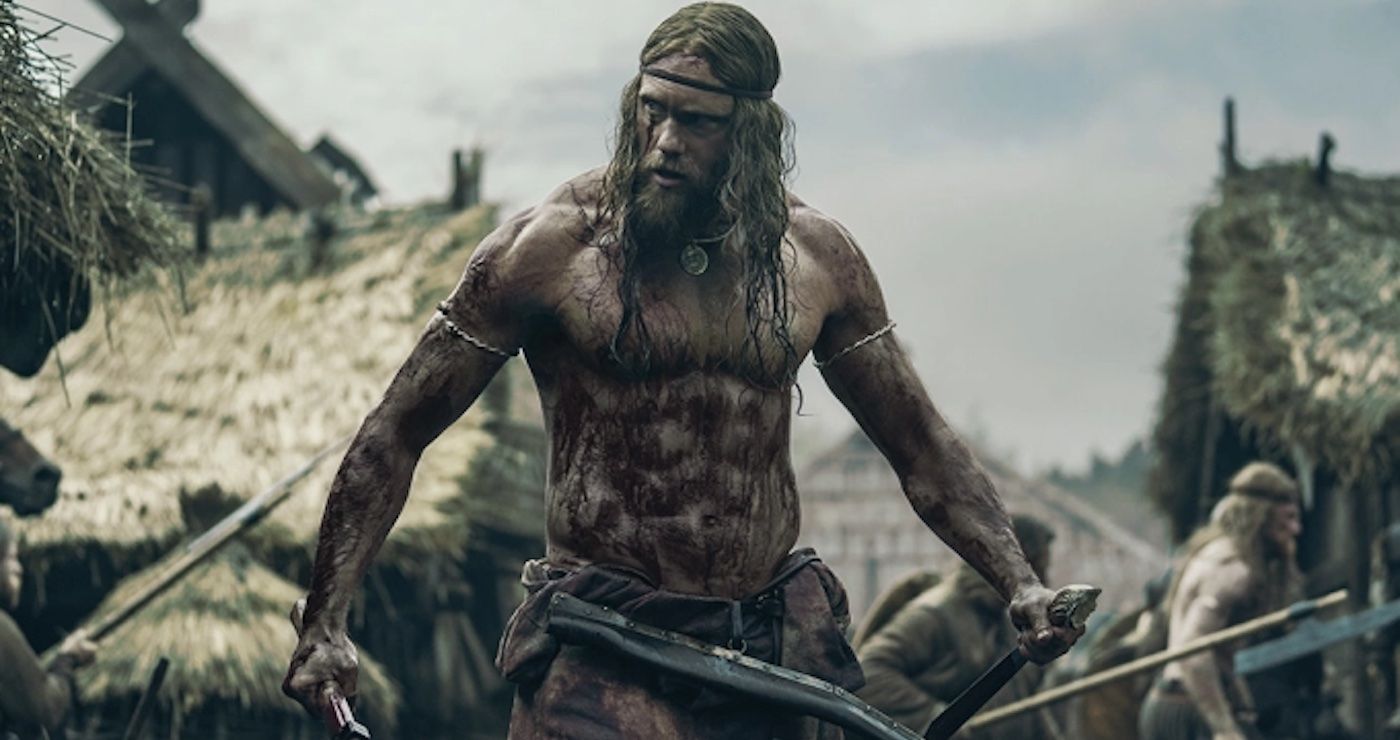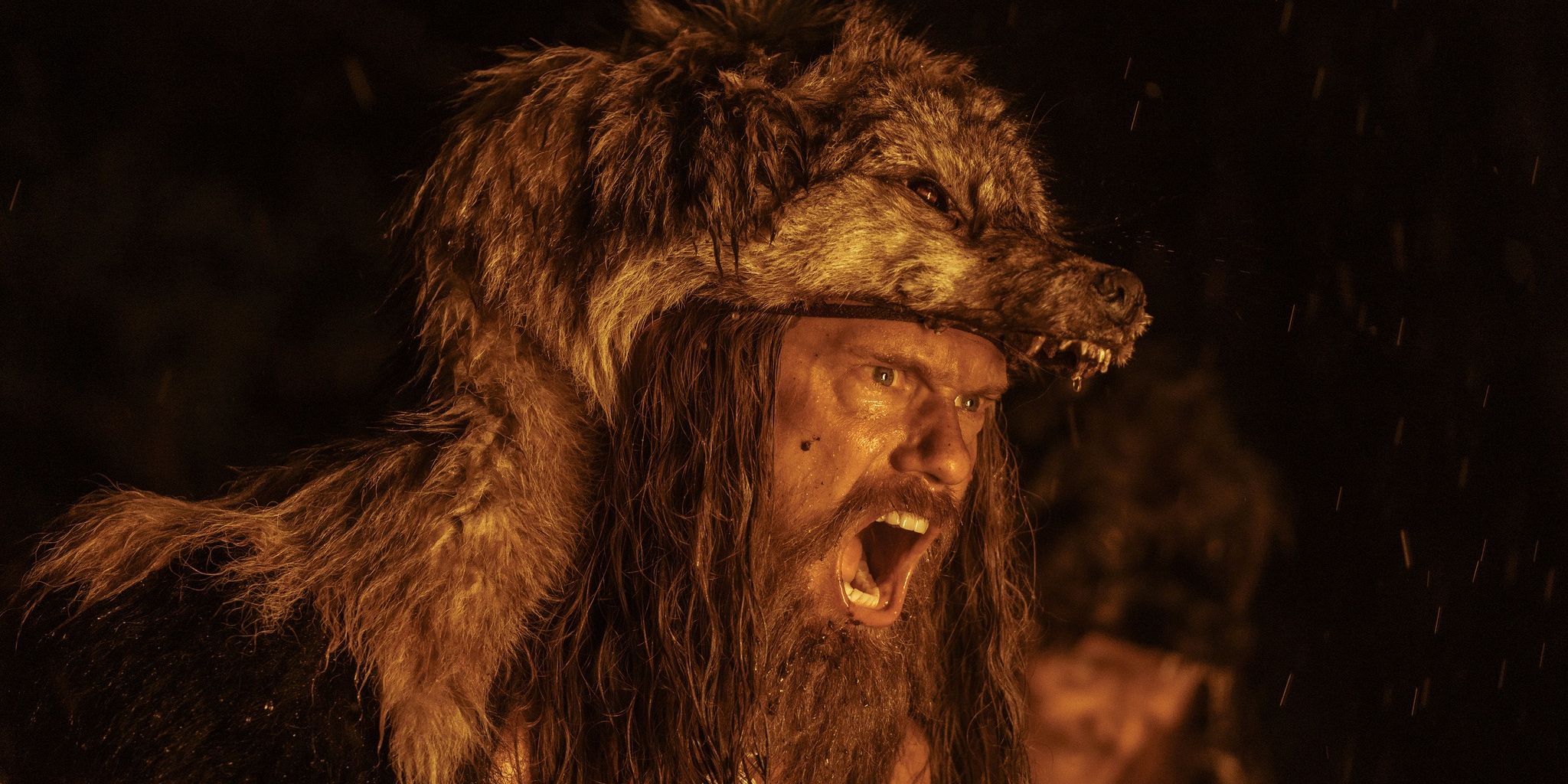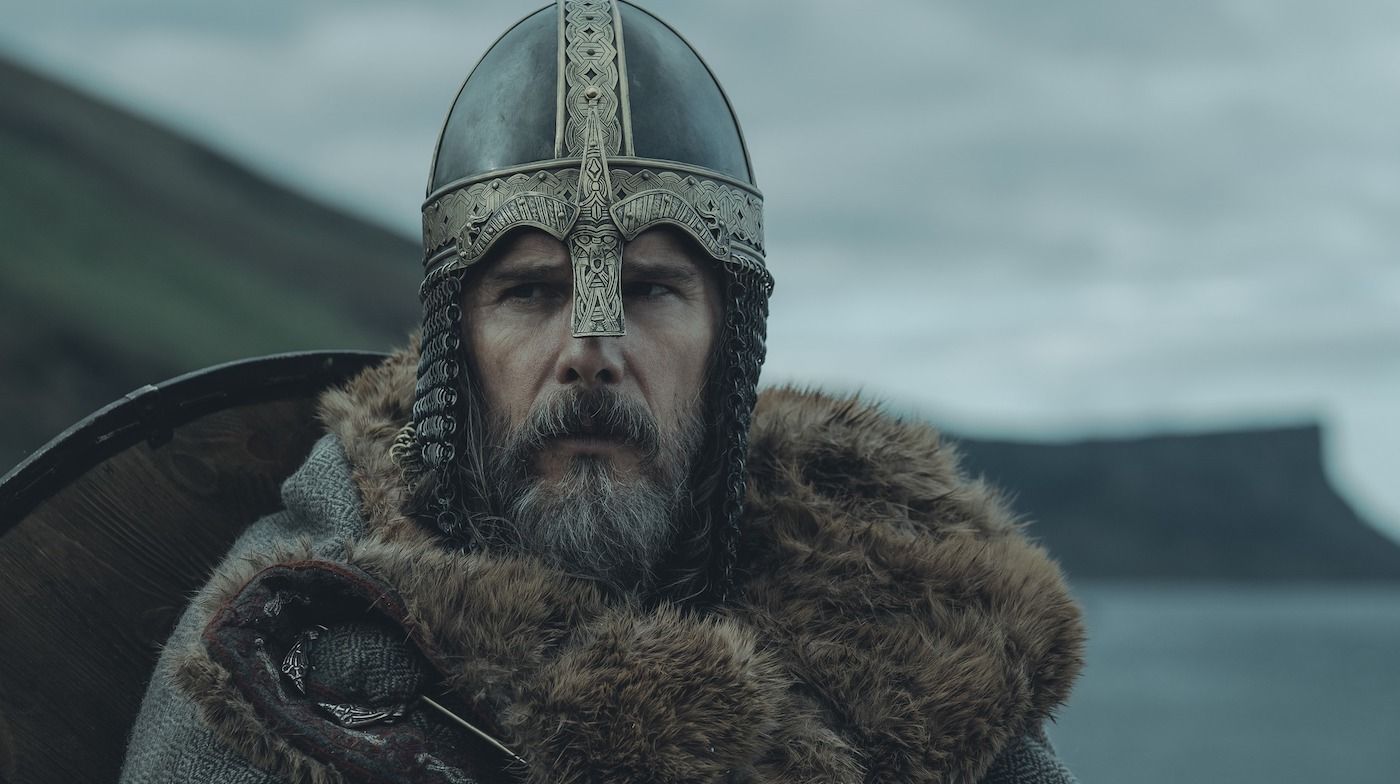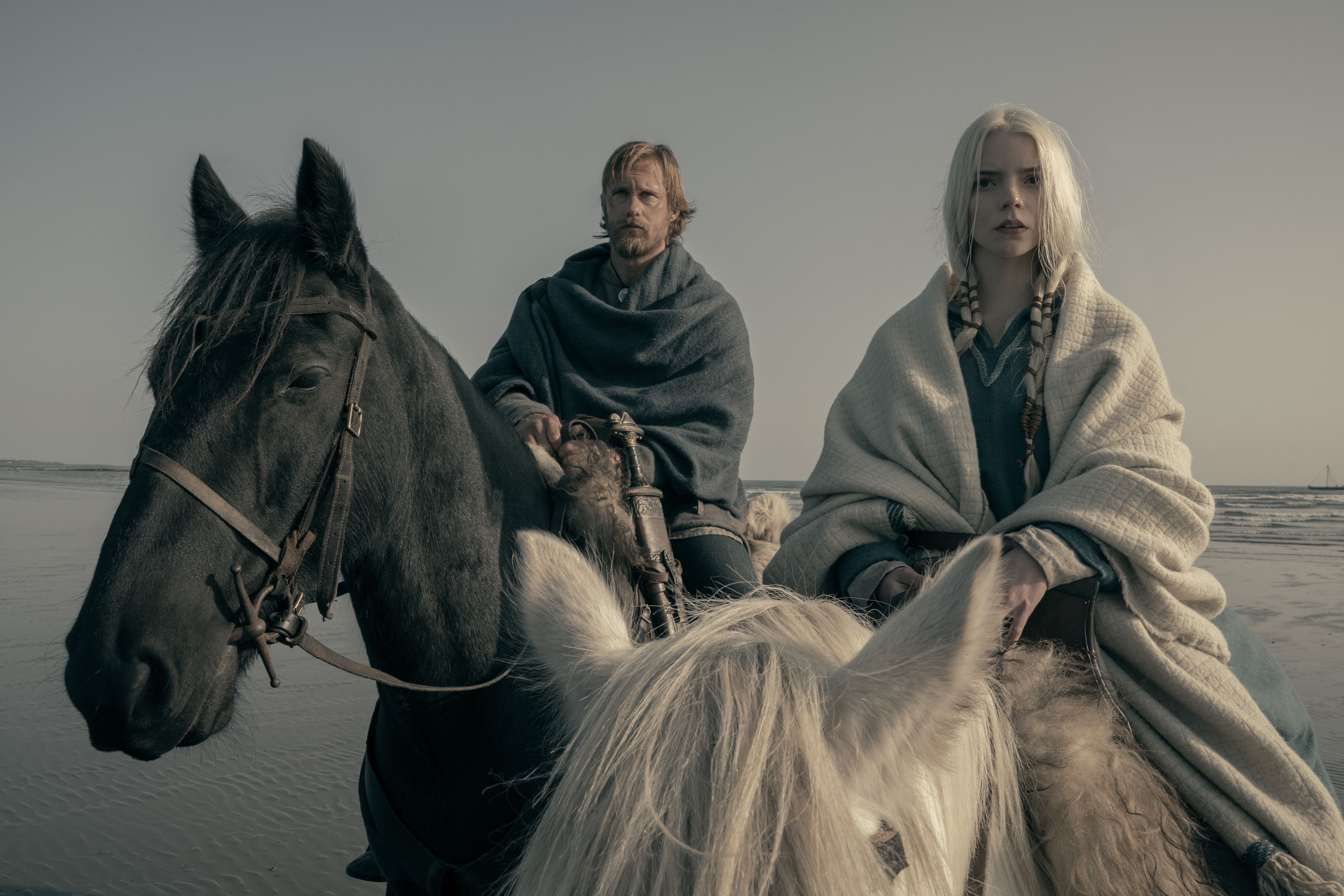Robert Eggers‘ Viking revenge epic, The Northman, out now on digital, 4K Ultra HD Blue-ray, and DVD, looks to be in direct contrast with the films that the critically-acclaimed director has made before. Both The Witch and The Lighthouse were smaller in budget, cast, and scope, though The Northman is poised to be his biggest feature to date. The film boasts a considerably larger budget of $90 million and a diverse A-list cast including Alexander Skarsgård, Ethan Hawke, Willem Dafoe, Claes Bang, Anya Taylor-Joy, and Icelandic singer Björk to populate the brutal and immersive world he has created. Now, Eggers’ indie roots seem to have sprouted mainstream success with reviews praising the film as ambitious and captivating with plenty of intense action.
The Northman takes place in Iceland at the turn of the 10th century and revolves around Nordic prince Amleth (Skarsgård) who seeks revenge against his uncle Fjölnir (Bang) for the murder of his father. What follows is a tale of family, vengeance, and Viking mysticism. Although The Northman is written by Eggers and Icelandic poet and novelist Sjón Sigurdsson, there are some plot elements that might sound familiar to eagle-eyed viewers. But is The Northman a strictly fictional tale, or are there elements of truth to the story? Let’s take a deep dive into Eggers’ inspiration, Scandinavian folk tales, and Viking lore to find out.
The Northman is a Viking Version of Hamlet
The Northman shares much of its basic DNA with Shakespeare’s play. For the uninitiated, Hamlet is the story of a son whose father’s ghost instructs him to avenge his murder by killing his uncle. It’s a story whose basic building blocks can be found in many modern books and films such as The Lion King. It also appears in The Northman as well. In this version, Alexander Skarsgård plays Amleth, the Viking version of Hamlet, Ethan Hawke plays his murdered father, King Aurvandill, Nicole Kidman plays Amleth’s mother, Queen Gudrún, and Anya Taylor-Joy plays Olga, a version of Ophelia who has supernatural abilities and also happens to be Amleth’s love interest.
Rather than imitating Hamlet beat-for-beat, Eggers’ planned to use the familiar tale as the “main thrust of the story” before diving deeply into Viking culture and lore. But although Hamlet and The Northman share some basic similarities with Shakespeare’s text, Shakespeare himself was actually inspired to write Hamlet by the Old Norse folktale Vita Amlethi (“The Life of Amleth”) transcribed by Danish historian Saxo Grammaticus.
What’s the Background and Plot of Vita Amlethi?
Vita Amlethi was a story that was often passed down through the generations by word of mouth. It wasn’t until Saxo Grammaticus recorded the story around the year 1200 as part of his expansive record of Danish history and rulers, the Gesta Danorum (“Deeds of the Danes”), that it was immortalized in print.
The story of familial revenge takes place in Denmark and revolves around two brothers, Horwendil and Fengo, who have a relationship fraught with jealousy. After slaying the King of Norway, Horwendil marries his daughter, Gerutha, and they have a son named Amleth. But because he can’t get over his envy of his brother, Fengo murders Horwendil and then also marries Gerutha, who seems to be strangely okay with the whole thing.
Meanwhile, Amleth fakes madness to protect himself from his Uncle Fengo’s violent tendencies, though Fengo suspects that he’s planning revenge against him for the murder of his father. He attempts to get Amleth into admitting his plans using a beautiful woman to trick him into incriminating himself, and then by using a spy (who Amleth discovers and kills) to eavesdrop on his conversations with his mother. Neither plan works, which leads Fengo to make a last-ditch effort to get rid of his nephew for good. Rather than killing him himself, he banishes Amleth to England with directions for the King to execute him there. However, Amleth evades his death sentence using his wits, manages to return to his homeland, hunts down his uncle who believes him to be dead, and kills him. With his quest completed, Amleth marries the English princess and is hailed as the new king of Denmark.
What Are Vita Amlethi’s Similarities to Hamlet?
The story shares more than a few similarities to Hamlet, including its characters and arcs. In both stories there’s a villainous brother who murders his sibling and assumes the throne, a hero who pretends to be mad to protect himself from his violent uncle, a king trying to scheme his way into uncovering the hero’s secrets, as well as a hero who achieves his ultimate goal of revenge. Even the characters’ names in both stories often resemble each other, such as “Gerutha” in Vita Amlethi and “Gertrude” in Hamlet, not to mention that “Hamlet” and “Amleth” are anagrams.
Is the Setting and Viking Lore of The Northman Historically Accurate?
Eggers did “a ton of research” to make the film’s setting, world-building, and Viking culture as authentic as possible. The bulk of the film takes place in Iceland, which aligns with the migration of Norse settlers to Iceland in the 9th century. Although we have information about Vikings’ clothing, language, and practices from written accounts, it’s much more challenging to make a period-perfect recreation of settings and attire from over 1,000 years ago. To fill in the gaps, Eggers worked with a series of Viking historians, archeologists, and linguists to ensure that the Vikings of the film matched historical accounts and that the Vikings’ language of Old Norse (and their simple, blunt way of speaking) is period-accurate.
Vikings were also notoriously brutal. They weren’t shy about their torturous practices, enslaving their enemies, or taking part in ritualistic human sacrifices. Judging from the action-packed trailer, The Northman seems to be matching their viciousness and pursuit of avenging fallen family members. But for all their ferocity, Vikings also held powerfully strong spiritual beliefs. They believed in multiple realms of the afterlife as well as many gods and goddesses. This is represented in the film through Anya Taylor-Joy’s Olga, a character who features a dash of the supernatural to coincide with Vikings’ belief in magic and mysticism.







































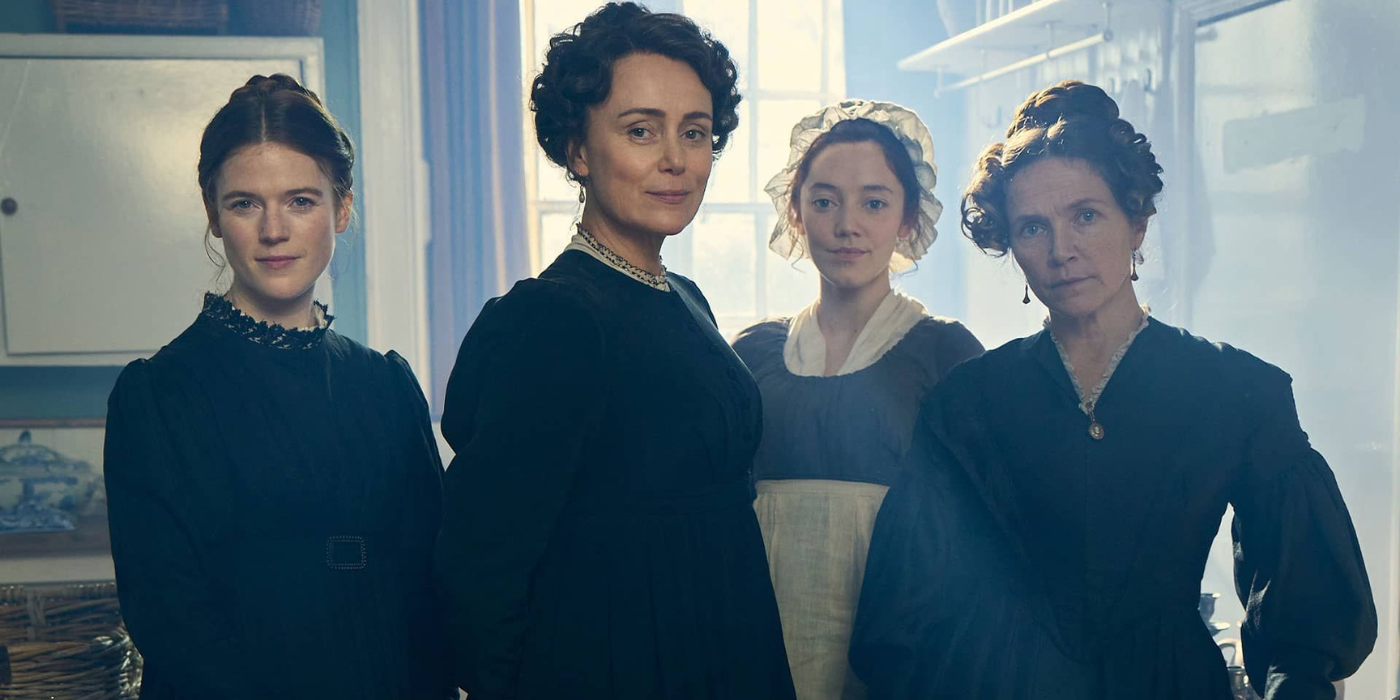
















![LinkedIn Provides Thought Leadership Tips [Infographic] LinkedIn Provides Thought Leadership Tips [Infographic]](https://imgproxy.divecdn.com/sGPjK1VM5eAOI_l-OTkmJTV2S8dHIfUwFmDwPWjhfjg/g:ce/rs:fit:770:435/Z3M6Ly9kaXZlc2l0ZS1zdG9yYWdlL2RpdmVpbWFnZS9saW5rZWRpbl90aG91Z2h0X2xlYWRlcnNoaXBfaW5mbzIucG5n.webp)



